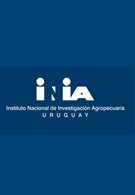The association between genetic resistance of lambs to gastrointestinal parasites (GIP) with dry matter intake (DMI) average daily gain (ADG) and residual feed intake (RFI) was studied. Sixty-four Corriedale lambs (357±14 days old), from divergent lines for resistance to GIP (27 resistant-R and 37 susceptible-S) developed by the Uruguayan Wool Secretariat were used. The animals were allotted to one of five outdoor pens, they were stratified by sex, body weight, and sire. Each pen was equipped with five automated feeding systems and two automatic weighing platforms allowing individual records of feed intake and body weight. After 14 days of acclimatization to diet (ad libitum Lucerne silage:DM 36.5%, CP 21.7%, ME 2.51%) and feeding system, two tests were run over two periods of 44 (P1) and 42 days (P2), respectively. Firstly, the animals were maintained worm-free (P1) followed by an artificial infestation of Haemonchus contortus (P2). The infestation occurred in three consecutive days with 2,000 L3 larvae per day. The second period was split into two subperiods from 0-23 and 24-42 days post infestation (P2a and P2b, respectively). Records for faecal egg count (FEC) were taken in days 9, 23, 27, 30, 42 post infestation. The DMI (kg/ day) was computed as the average of the individual daily intake, ADG (kg/day) was calculated by regression using all weights for each period, RFI is the residuals resulting from the model DMI = ADG + metabolic weight (defined as mid-weight for each period ^0.75) + pen (1-5) + type of birth (1 or 2). There were no differences between lines in DMI, ADG, RFI for both periods. However, statically significative differences (P

